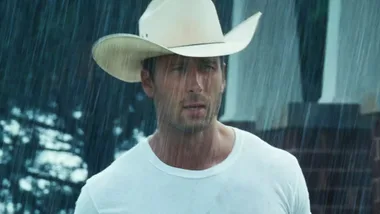Ariel views reveal the devastation La Niña brought upon the Northern Rivers town of Lismore and beyond as New South Wales recorded it’s sixth wettest year on record. But the pain caused by loss, survival and trauma is etched on the faces of these six local women who lived through the terrifying experience. As they work through the gruelling and all too familiar clean-up, they share their stories.
Kate Stroud
Artist, 35
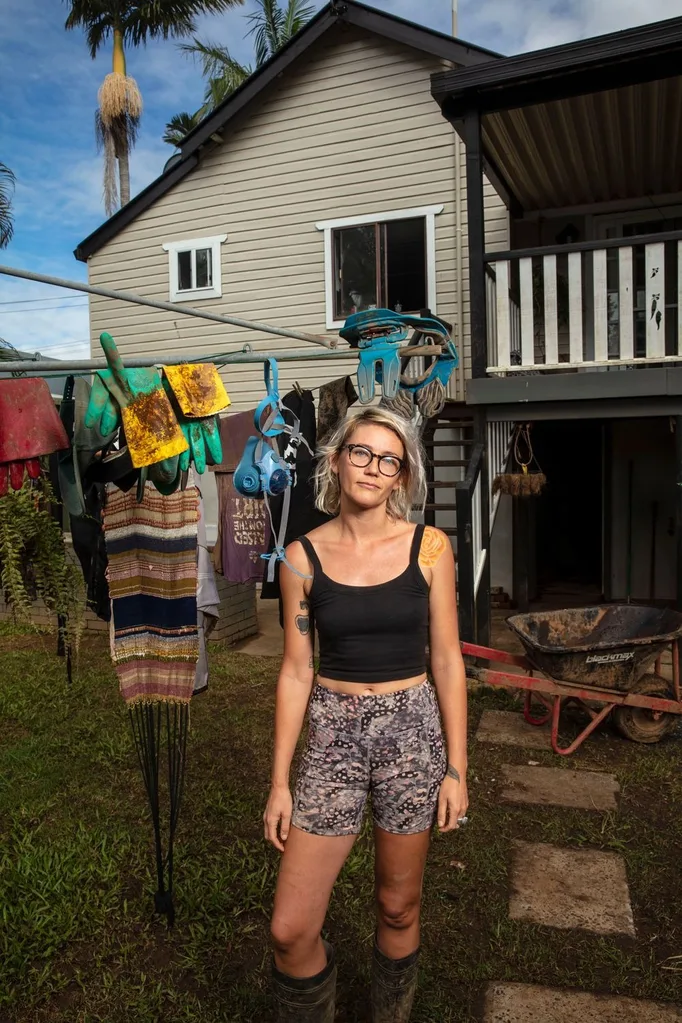
I was in my home when I realised the severity of what was about to happen. I received a message from a friend saying, “My love, it’s going to come inside your house. Charge your devices, pack a backpack with water, snacks. Sorry to sound scary. I love you.”
There was no sleep that night. We walked around in circles not knowing what to do, what to save, saying goodbye to our home, our life as we knew it. The carpet came alive underfoot, pushing our footsteps in waves across the room, tumbling furniture into the brown dark liquid
under darkness.
Dawn broke slowly. Something was moving just beyond the house, a cow four times my size washed up to our verandah railing. The panic in its eyes – silently begging for us to help as it struggled to keep its head above water – will be an image that will be forever etched in my mind.
There was nothing we could do.
In the dim morning light, the water now over our waists, we began to shiver with cold. We stayed for six hours as the storm raged on, amplified by our tin roof. My ears began to hallucinate from the lack of sleep. My body wanted to turn off. It felt like waves were crashing on the house. We could hear
the hum of boats beyond, none of them for us – they were too far away.
My community desperately attempted to get someone to us. I stood at the window of the kitchen waiting for the boat to come back for us. After six hours, a man in a black wetsuit finally appeared, so I banged on the glass with my fist. I passed him my backpack and climbed aboard his jet ski. My
partner climbed on behind me and closed the window behind us. Bye bye home.
Polly Campi
Shop Owener, 64
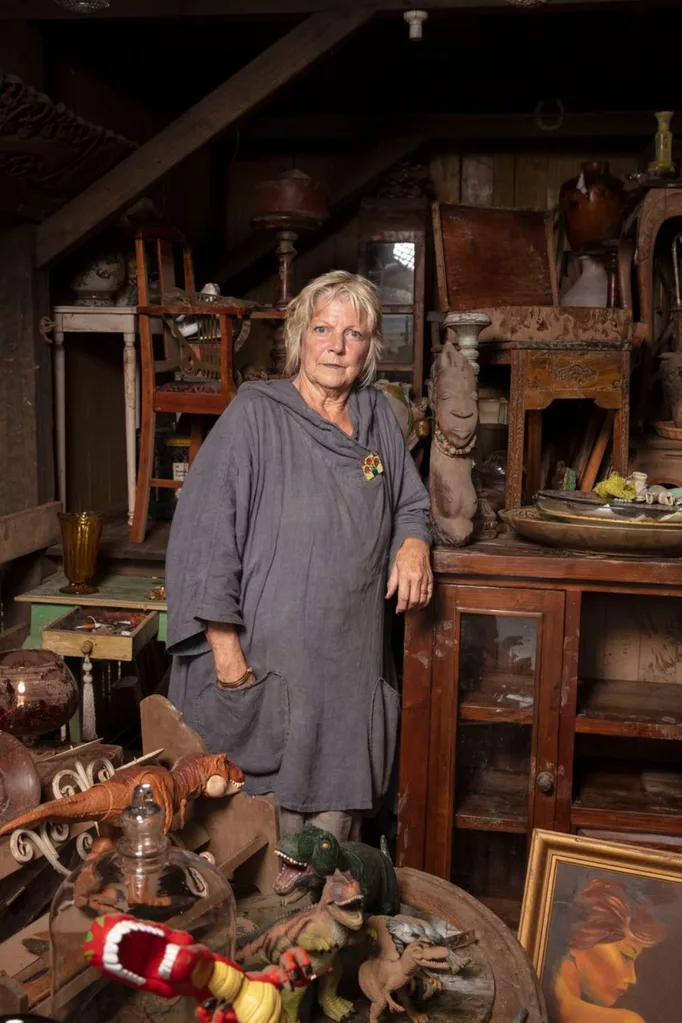
I was trying to drive to safety when I suddenly lost control of the car. I just started spinning and thought, “Oh my God, we’re just going to drown.” I turned around and said to my dog, “Come on Pea, we’ve got to get out of here.” We hopped out and then suddenly my car disappeared and everything went black.
I held onto a wire cable for 90 minutes as debris-filled water surged around me. I kept getting whacked by wheelie bins, pieces of trees and a picket fence.
My legs were wrapped around the cable. I absolutely thought I was going to die, and a few times I just wanted to go. I didn’t think anyone was going to come. I thought I was going down to a watery grave. I was crying and screaming, “Please someone help me.” Water was up to my neck. It seemed like forever but all of a sudden there was a floodlight coming towards me.
Losing Pea in the floods is what hurts the most. When the SES boat took me to the evacuation centre, we saw people waving on balconies, shouting,
“We’re over here, we’re over here!” The SES worker replied saying, “Be patient, we’ll be back. Be patient. We’ll be back.” I thought to myself, “I hope so.”
Sally Flannery
Design Agency Manager, 28
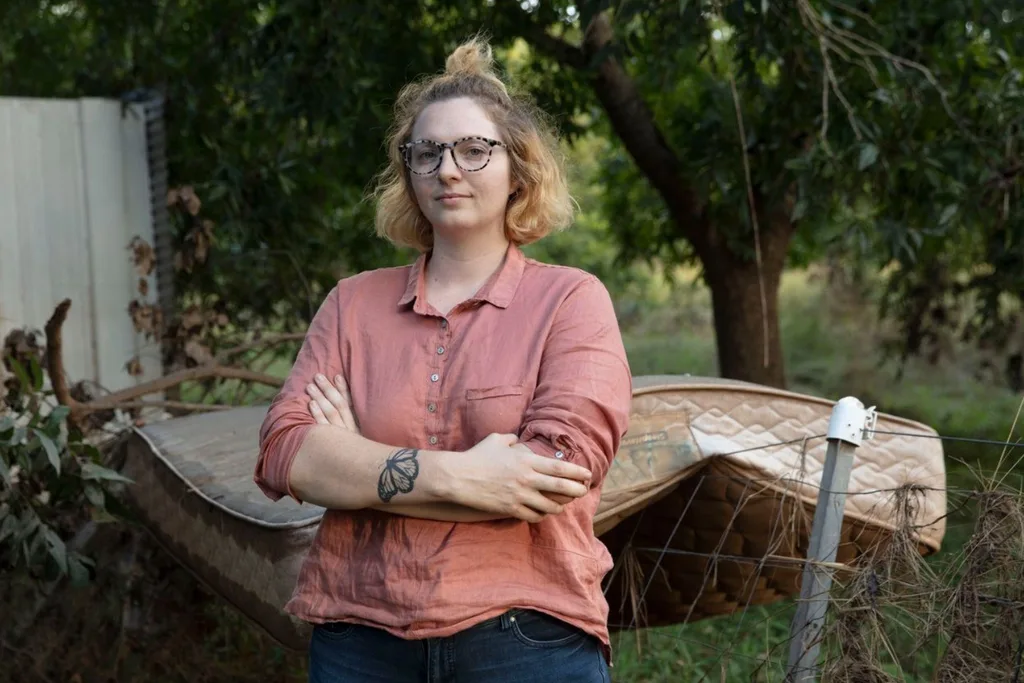
I’ve lost everything really. I lost my cute vintage caravan under the pecan trees by the river, my vintage clothing store that I was about to open, my full-time workplace – even my partner’s house.
I realised how severe it was when the water started coming into the second floor of our shop-top apartment, something that had never happened before.
When I heard people screaming from roofs and electrical transformers exploding, I realised it was a life-threatening situation. We were evacuated by boat and when I finally got to safety, I realised I had to help. Before I was rescued, I put a post on Facebook asking if anyone else was having trouble contacting the SES or police. [But] my phone died and I was rescued.
Two hours later, when I checked my post, there were more than 1000 calls for help. I responded by setting up a system to log every rescue needed and liaised with police and the SES to have them added to their rescues. The way the system operates needs so much change and I want to
continue to be a part of making that change happen.
It’s been incredible seeing our community come together, and all these amazing women and men standing up and stepping into huge roles for their community. For so many of us community is all we have left.
Ashlee Jones
Pecan Farmer, 35
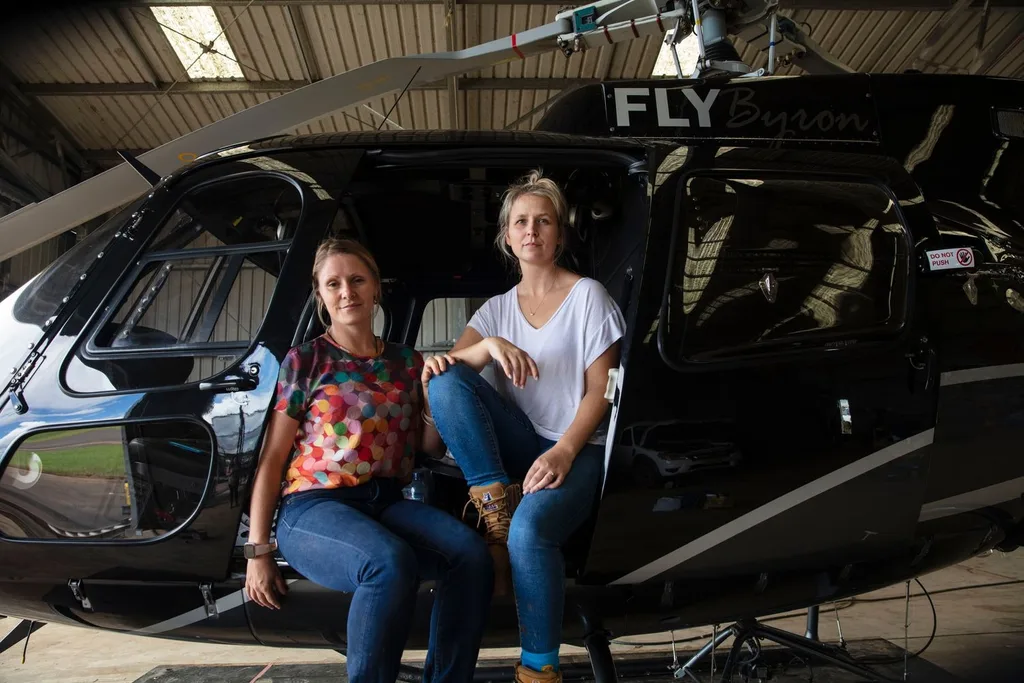
When I realised how much of a critical situation Lismore was in, I raced to get enough food to send out to people who were completely isolated. I put as much in a trolley as I could, and as I was doing that, the supermarkets were emptying out. Soon there was no stock in town. I work in food manufacturing, so I put a message on Facebook asking who needed food and Mike [Jessica Barnes’ husband] replied, “We need food [for everyone].”
When I got up to the helicopter hangar [at Lismore airport], Mike told me they’d decided to do food supply drops, and I haven’t really been home since. When you realise the importance of what you’re doing, everything else melts away. We became a distribution house as well as doing helicopter rescue work. Calls were coming in from people who hadn’t heard from their families. Nobody gave you proper addresses because everyone was so
distressed. Some pilots would land and couldn’t find the houses. They were hiking through knee-high water to get supplies to people.
Now I’m finding it hard to integrate back into my normal life and do my day job, to parent and engage with my kids. I know it will pass, but it may take a while.
Jessica Barnes
Operations Manager, 29
We were living at our office, which has never gone under in any previous flood. We always thought, “Well, at least if it floods, we’ll just stay here.” But when we woke up at 5am, the water was already at our doorstep. It was still pitch-black outside.
We were so lucky we had the helicopter parked up on the mound. So we chucked the kids in a tinny, rowed to the chopper, and then flew down to the Westpac base.
That was the moment I realised just how bad it was going to be. Our entire business has been scrapped. We’re a helicopter company [Rotorwing and Fly Byron] and store virtually everything in the hangar.
So, with living on site, it means our house, office and our hangar have been destroyed. But so many are suffering; that’s why we decided to use our choppers to help deliver food to people in need. But there was good news. When the flood hit, we couldn’t take our dog (who was going wild) in the tinny because we couldn’t risk him tipping the boat over.
When my husband went back the next day, Huey was standing on the front counter of the kitchen. We don’t know how he survived, as everything went under. Once we found him alive, possessions didn’t really mean too much to us anymore.
SJ McKay
Photo Agency Owner, 37
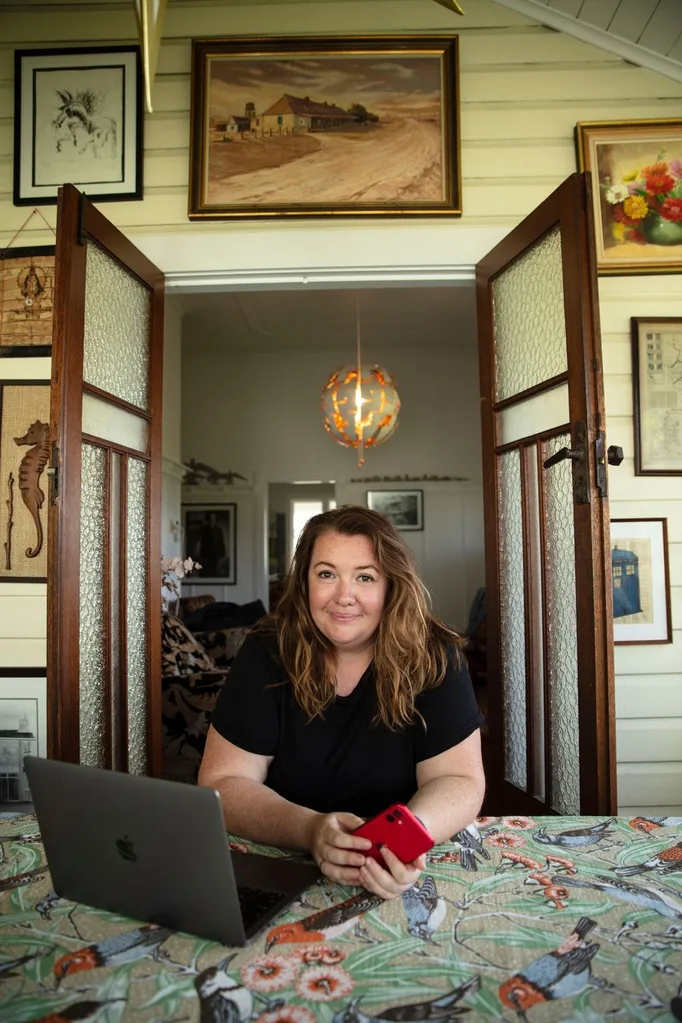
In Lismore CBD there are flood markers on a lot of telegraph poles, giving an indication of how high previous flood waters have reached. I used to think to myself that the 2017 level was so high it was almost impossible to visualise. Of course, now I know what that looks like.
By the Sunday night I was feeling panicked but I did manage to get some sleep. I feel guilty about that. We rested while Lismore was drowning, while people I know had water coming into their homes and businesses, while people were being rescued.
I woke up to an emergency text message on my phone from the SES, saying “Lismore is isolated.” My heart dropped and raced [at once].
The premises I was leasing in Lismore’s CBD has been completely trashed. I was fitting it out for the opening of a photographic art gallery
in early May. This loss doesn’t compare to what others have gone through but I will need to reassess how I can make it work in future.
My routine has been taken away. Our daily walking track is inaccessible, our coffee shops have been decimated, our local pub destroyed,
my gym and hairdressers are gone. Life as we knew it has completely changed. No-one knows what version of Lismore will come back or when.
This article originally appeared in the May issue of marie claire Australia.

